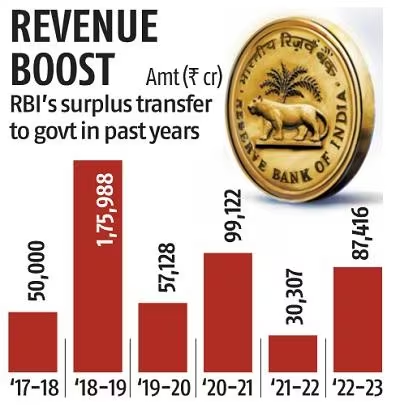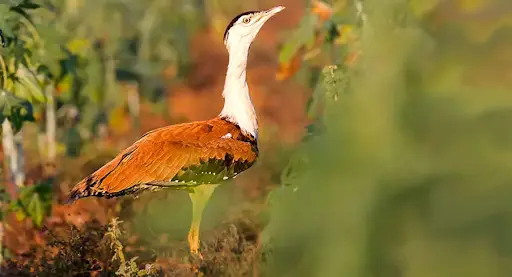Saturday, 6th July 2024
Southeast Asian Nations Want to Join BRICS
Why in the news ?
- Southeast Asian nations such as Malaysia and Thailand are the latest nations in Southeast Asia to express interest in joining the expanded BRICS group of emerging economies.

About:
- Initially comprising Brazil, Russia, India, China, and South Africa, BRICS has recently extended invitations to Egypt, Ethiopia, Iran, Saudi Arabia, and the United Arab Emirates to expand its membership.
- The expanded group might be termed "BRICS+" once officially named.
- The 15th BRICS Summit was hosted by South Africa in 2023, and Russia will host the 16th Brics summit in October 2024.
- Joining BRICS could potentially bolster these relationships and yield additional trade advantages.
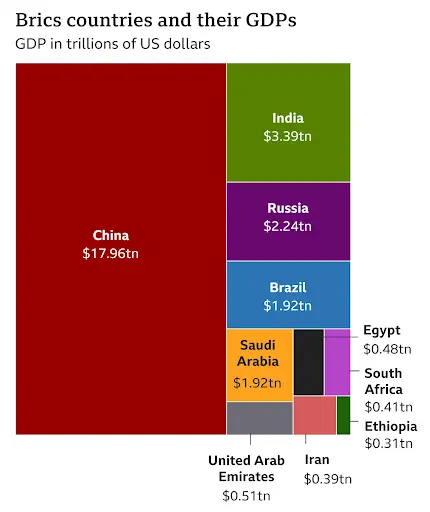
Benefits of Joining BRICS:
- Strengthening Trade Ties with China:
- Joining BRICS could solidify and expand trade relationships with China, a major trading partner for Malaysia and Thailand.
- Promoting Digital Economy Growth:
- Integration with BRICS countries can accelerate Malaysia’s digital economy growth and allow Thailand to attract investments in key sectors like services, manufacturing, and agriculture.
- Geopolitical Influence:
- BRICS promotes a multipolar world order, offering Southeast Asian nations increased autonomy and bargaining power in international relations.
- South-South Cooperation:
- Participation in BRICS facilitates collaboration among developing countries, providing opportunities for learning and cooperation in areas such as poverty reduction, infrastructure development, and technological innovation.
- Diversifying Economic Partnerships:
- BRICS membership diversifies economic partnerships, reducing dependence on traditional Western trade partners and enhancing resilience against global market fluctuations.
- Alignment with ASEAN Principles:
- BRICS principles such as respecting sovereignty and diversity resonate with ASEAN values, fostering stronger international cooperation and policy alignment.
Significance of BRICS for India:
- Economic Cooperation:
- BRICS provides India with a platform to engage closely with other major emerging economies (Brazil, Russia, China, South Africa). This cooperation spans various sectors such as trade, investment, technology transfer, and infrastructure development.
- Global Influence and Multipolarity:
- As a founding member of BRICS, India plays a pivotal role in promoting a multipolar world order. This challenges the dominance of Western powers and advocates for a more balanced global governance structure.
- Strategic Partnerships:
- BRICS facilitates strategic partnerships for India in areas like defence, energy, and space exploration. Collaborative initiatives within BRICS contribute to India’s technological advancement and national development goals.
- Trade and Investment Opportunities:
- Membership in BRICS opens doors for India to diversify its economic partnerships beyond traditional markets. It provides access to large consumer markets and investment opportunities in member countries.
- Development Initiatives:
- BRICS platforms support India’s development initiatives, particularly in areas such as sustainable development, healthcare, and education. Collaborative efforts within BRICS contribute to addressing global challenges and promoting inclusive growth.
- Political Diplomacy:
- Participation in BRICS enhances India’s diplomatic influence on global issues such as climate change, terrorism, and global trade reform. It strengthens India’s voice in international forums and negotiations.
Challenges of Joining BRICS:
- Geopolitical Challenges:
- Balancing Alliances: Southeast Asian nations have strong ties with the US and other Western powers, which could be strained by joining BRICS. Balancing existing alliances while forming new partnerships within BRICS would require careful diplomacy.
- Tensions within BRICS: Geopolitical rivalries within BRICS, particularly between India and China, may complicate Southeast Asian nations' alignment with the group's unified goals.
- Economic Challenges:
- Over-reliance on China: Increased economic ties with China through BRICS could heighten dependency, potentially exposing Southeast Asian economies to vulnerabilities in case of strained relations or economic fluctuations.
- Differing Economic Priorities: BRICS members have diverse economic structures and development priorities, which could lead to conflicts of interest and challenges in coordinating beneficial economic policies for Southeast Asian nations.
- Political Challenges:
- Domestic Opposition: Joining BRICS might face resistance domestically due to concerns about impacting existing alliances or compromising national policy autonomy.
- Values Misalignment: Differences in approaches to issues like human rights and governance between BRICS and Southeast Asian nations could create tensions and ethical dilemmas.
- Limited Influence: Southeast Asian nations may have limited influence within BRICS due to the economic dominance of existing members, potentially restricting their ability to shape the group's agenda according to their national interests.
|
BRICS:
|
Conclusion
Hence, Southeast Asian nations must conduct a meticulous evaluation of the potential advantages and drawbacks of joining BRICS. It is essential for them to engage in extensive consultations with all stakeholders, including domestic political figures, civil society organisations, and regional partners.
|
UPSC Civil Services Examination, Previous Year Questions (PYQs) Prelims Q:1 Consider the following statements: (2016)
Which of the statements given above is/are correct?
Ans: (b) Q:2 The ‘Fortaleza Declaration’, recently in the news, is related to the affairs of (2015)
Ans: (b) Q:3 With reference to a grouping of countries known as BRICS, consider the following statements: (2014)
Which of the statements given above is/are correct?
Ans: (b) |
Source:IE
Education be brought back to the State List
Why in the news ?
- Recently, incidents of paper leaks NEET-UG & UGC-NET and widespread protests have prompted discussions on returning education in India to the State List of the Indian Constitution.
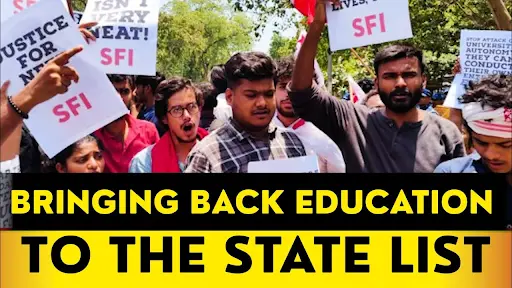
Current Status of Education in India:
- Gender Gap in Literacy:
- The gender gap in literacy in India began narrowing from 1991 onwards, showing accelerated improvement.
- However, the female literacy rate in India stands at 65.46% as per Census 2011, significantly below the global average of 87% reported by UNESCO in 2015.
- Overall Literacy Rate:
- India's overall literacy rate is 74.04%, which is lower than the world average of 86.3%.
- Many states in India have literacy rates that are only slightly above the national average, indicating a widespread need for improvement across the country.
Why Education Should be on the State List:
- Original Constitution Design:
- Education was initially placed on the State List by the framers of the Constitution, recognizing that local governments are better suited to address educational needs.
- Impact of 42nd Amendment:
- During the Emergency, the unilateral shift of education to the Concurrent List undermined the federal structure. Returning education to the State List would restore the intended balance of power.
- State-Specific Policies:
- States can tailor educational policies to their unique cultural, linguistic, and socio-economic contexts.
- This customization ensures education is relevant and responsive to local needs, potentially improving literacy rates and educational outcomes.
- For instance, under Article 350A, efforts to provide primary education in the mother tongue can better cater to linguistic diversity.
- Divergent Policies:
- Central government policies like the National Education Policy (NEP) and NEET often conflict with state policies, leading to inefficiencies and disenfranchisement.
- Resource Allocation:
- States bear the majority of educational expenditure (85%), indicating their significant financial commitment and the need for autonomy in resource management.
- Merit Determination:
- Legal cases, such as the Tamil Nadu Admission in Professional Educational Institutions Act 2006 upheld by the courts, emphasise that centralised exams like NEET may not adequately assess merit across diverse educational backgrounds.
- Accountability:
- Bringing significant educational institutes under state jurisdiction can enhance accountability for quality education delivery.
Why Education Should Not be on the State List:
- Poor Status of Primary Education:
- Reports like ASER 2023 reveal that a significant percentage of rural children struggle with basic literacy and numeracy skills, highlighting governance challenges at the state level.
- National Integration and Mobility:
- A concurrent list allows the Centre to set core national standards while accommodating local adaptations, promoting national integration and cultural exchange.
- Ensuring Minimum Standards and Equity:
- The Right to Education Act (RTE), 2009, guarantees a minimum level of education across India, with central oversight ensuring implementation to promote equity and access, regardless of state disparities.
- Standardisation of Skills and Employability:
- Reports by FICCI emphasise the need for a standardised national curriculum to ensure graduates are equipped with skills demanded by a pan-India job market.
- A concurrent list facilitates this while allowing states to offer vocational training tailored to local needs.
- Regulation and Accreditation:
- Central oversight in a concurrent list ensures quality standards in national institutions, maintaining credibility and consistency in education across states.
- Addressing National Concerns:
- The NEP 2020 outlines strategies for national priorities like digital literacy and climate change education. A concurrent list allows for a coordinated approach while accommodating state-specific educational needs.
Way Forward for Education Reform in India:
- Collaborative Federalism:
- Emphasise "Collaborative Federalism" as advocated by the Kothari Commission (1964-66).
- This approach sets national minimum standards while granting states flexibility in curriculum, language, and teaching methods.
- Outcome-based Funding:
- Implement outcome-based funding mechanisms as proposed in the NITI Aayog's Strategy for New India @ 75.
- Allocate resources based on learning outcomes to incentivize states to enhance educational quality.
- Decentralised School Management:
- Promote decentralised school management structures aligned with the principles of the Right to Education Act (RTE) 2009.
- Empower School Management Committees (SMCs) with community participation to foster local ownership and responsiveness.
- Teacher Training & Transfer Policy Reforms:
- Advocate for reforms recommended by the TSR Subramanian Committee Report (2009).
- Enhance teacher training programs, establish transparent transfer policies, and introduce performance-based incentives to motivate and improve teaching effectiveness.
- Standardised National Assessment with State-Specific Benchmarks:
- Develop a standardised national assessment framework alongside state-specific benchmarks, drawing inspiration from practices in countries like Australia.
- This allows for national comparisons while accommodating regional diversity in educational goals.
- Leveraging Technology for Equitable Access:
- Implement strategies outlined in the Government of India's "Pandit Madan Mohan Malaviya National Mission on Teachers and Teaching" (PMMMNMTT) to utilise technology for equitable access to quality education, especially in remote areas.
- National Curriculum Framework with State Adaptations:
- Develop a flexible National Curriculum Framework (NCF) in collaboration with NCERT, enabling states to customise curriculum content to their linguistic and cultural contexts.
- This approach ensures alignment with national educational objectives while respecting local educational needs
|
UPSC Civil Services Examination, Previous Year Question (PYQ) Prelims Q:1 Which of the following provisions of the Constitution does India have a bearing on Education? (2012)
Select the correct answer using the codes given below:
Ans: (d) Mains Q:1 Discuss the main objectives of Population Education and point out the measures to achieve them in India in detail. (2021) Q:2 How have digital initiatives in India contributed to the functioning of the education system in the country? Elaborate on your answer. (2020) |
Declassification of Private Papers of Public Figures
Why in the news?
- Recently, the Prime Ministers’ Museum & Library (PMML) has announced that future donors of private papers from eminent personalities will no longer be able to impose indefinite conditions on their declassification.
- This decision follows an incident in 2008 when Congress leader Sonia Gandhi reclaimed and restricted access to several boxes of papers from Jawaharlal Nehru’s Private Collection that had been donated to the museum.
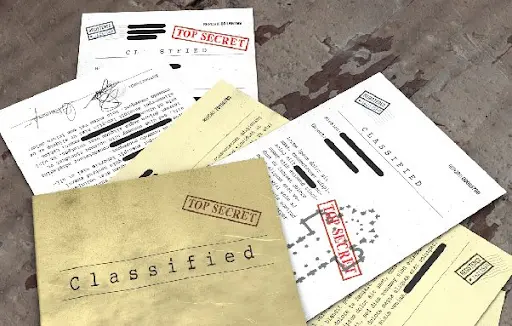
Key Points:
Prime Ministers’ Museum & Library (PMML)
- Renamed Institution: The Nehru Memorial Museum and Library (NMML) is now the Prime Ministers’ Museum & Library (PMML).
- Establishment: Originally established in memory of Jawaharlal Nehru (1889-1964).
- Autonomy: It operates as an autonomous institution under the Ministry of Culture, Government of India.
- Location: Situated in Teen Murti House, the official residence of India’s first Prime Minister.
- Constituents: Includes a Memorial Museum, a library on modern India, a Centre for Contemporary Studies, and the Nehru Planetarium.

Private Papers of Public Figures:
- About
- Definition: Private papers of public figures include personal documents, correspondence, diaries, manuscripts, and other records from notable individuals such as politicians, leaders, and influential personalities.
- Value: These papers offer insights into their personal lives, thoughts, and interactions, making them valuable for historical research and understanding the context of their public roles and contributions.
- Sources: Collections come from families, institutions, universities, and other private donors.
- Significance: They are crucial for an accurate appraisal of these personalities' lives and times, essential for understanding India's modern history and significant events.
- Private Papers vs Personal Papers
- Private Papers: These include correspondence and documents from public figures, such as Presidents or Prime Ministers, with other notable individuals or institutions. They are owned by the individual's family or private individuals and are part of the private collection.
- Personal Papers: These are documents and correspondence held in a personal capacity, not necessarily part of an official collection, and pertain to the individual's personal life.
- Official Records
- Description: Official records are another category of documents maintained by various government departments and ministries.
- Content: These records include letters, records, or file notings related to the operations of central and state governments.
- Other Organisations Acquiring Private Papers:
- Another key institution under the Ministry of Culture that acquires private collections.
- They only accept papers that donors agree to declassify, with the norm being to put all records in the public domain, except in rare, sensitive cases.
Declassification of Private Papers:
- Conditions Imposed by Donors
- Agreements: Donors may set conditions on when and how their collections can be made public.
- Issues: PMML has faced challenges where donors did not specify declassification timelines, hindering public and researcher access.
- New Declassification Rules by Ministry of Culture
- Standard Embargo: A five-year embargo from the date of receipt of newspapers, extendable in rare cases to a maximum of ten years.
- Laws Governing Declassification in India
- Public Records Rules, 1997: Governs the declassification of official records and correspondence in India.
- Declassification Responsibility: Lies with respective organisations, with a standard declassification period of 25 years for official records.
- Private Papers: The 1997 Rules do not extensively cover private papers; access to these is voluntary, through donation or sale.
Source: IE
Replacing the Wholesale Price Index
Why in the News?
- The DPIIT is nearing completion of a model to introduce a Producer Price Index (PPI) in India, potentially replacing the Wholesale Price Index (WPI).
- The government has been working for over two decades to develop a methodology for the PPI that improves upon the existing WPI.
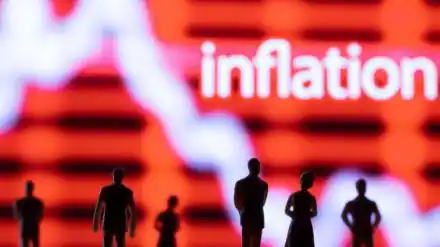
What is the Wholesale Price Index (WPI)?
- Definition: WPI represents the price of goods at a wholesale stage e. goods that are sold in bulk and traded between organisations instead of consumers, and is used as a measure of inflation in some economies.
- How is it calculated?
- WPIs are reported monthly in order to show the average price changes of goods.
- The total costs of the goods being considered in one year are then compared with the total costs of goods in the base year.
- The total prices for the base year are equal to 100 on the scale. Prices from another year are compared to that total and expressed as a percentage of change.
- WPI in India:
- It is used as an important measure of inflation in India and takes into account the change in price of goods only.
- WPI data is published by the Office of Economic Adviser, Ministry of Commerce and Industry, Government of India.
- The current series of WPI - with base year of 2011-12 - was the seventh revision of WPI and implemented from 2017 onwards.
Major components of WPI:
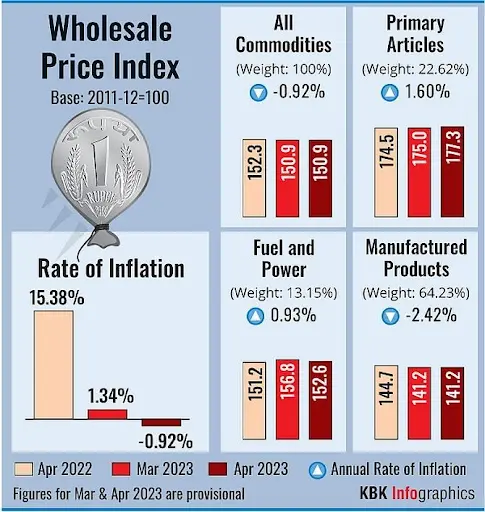
- Primary Articles: This category encompasses Food Articles and Non-Food Articles such as Oil Seeds, Minerals, and Crude Petroleum.
- Fuel & Power: This component monitors the price movements of Petrol, Diesel, and LPG.
- Manufactured Goods: The largest category includes Textiles, Apparels, Chemicals, Cement, Metals, Sugar, Tobacco Products, Vegetable and Animal Oils, among others.
- WPI Food Index: This sub-index within the Wholesale Price Index (WPI) comprises Food Articles from the Primary Articles category and food products from the Manufactured Goods category.
- Significance of WPI: The Wholesale Price Index (WPI) serves as a straightforward method for calculating inflation and plays a significant role in shaping fiscal and monetary policies.
Criticism of WPI:
- It does not adequately represent inflation experienced by the general public who purchase goods at retail prices.
- The exclusion of the service sector, which accounts for about 55% of GDP, is a notable limitation.
- Issues such as double-counting and the exclusion of exports and imports introduce biases in the index.
Producer Price Index (PPI):
- The Producer Price Index (PPI) measures wholesale prices from the perspective of goods and service producers.
- It tracks price changes at various stages of production before goods reach the final consumer.
- The PPI aligns conceptually with international standards, particularly the System of National Accounts (SNA), used for compiling economic activity measures.
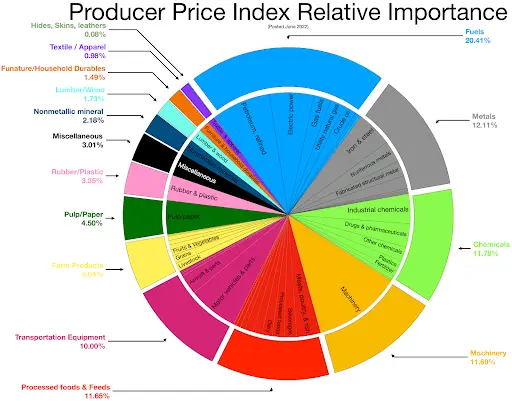
Challenges in Shifting from WPI to PPI:
- Data Availability and Quality:
- Comprehensive and reliable data for PPI calculations may be limited, impacting economic analysis that requires accurate and consistent data across sectors and regions.
- Sectoral Coverage and Representation:
- PPI must accurately cover a wide range of sectors to reflect production costs and inflation trends effectively, which poses a challenge in aligning coverage with economic diversity and significance.
- Methodological Differences:
- Differences in methodologies between WPI and PPI, such as base years, basket of goods, and weighting structures, require careful adjustment to ensure comparability and continuity in economic analysis.
- Transition Period and Adaptation:
- Transitioning from WPI to PPI involves adjustment periods for data collection, processing systems, and user adaptation.
- Stakeholders, including policymakers and businesses, require time to understand and adapt to the new index.
- Impact on Policy Formulation:
- Shifting to PPI may impact policy formulation as it focuses on producer-level prices rather than final consumer prices.
- Assessing implications for monetary policy, fiscal planning, and economic forecasting is crucial in light of these changes
Current Status of WPI:
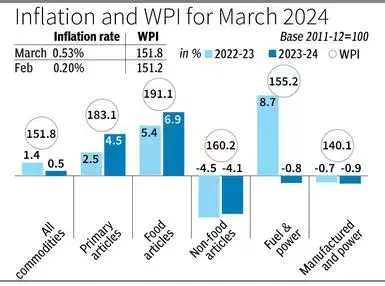
|
UPSC Civil Services Examination, Previous Year Question (PYQ) Prelims Q.1 With reference to the Indian economy, demand-pull inflation can be caused/increased by which of the following?
Select the correct answer using the code given below:
Ans: (a) Q.2 Consider the following statements: (2020)
Which of the statements given above is/are correct?
Ans: (a) |
Source: IE
Axiom-4 Mission
Why in the news ?
- As part of the Axiom-4 mission, the Indian Space Research Organisation (ISRO) has shortlisted two of its four trained Gaganyaan astronauts to travel to the International Space Station (ISS).
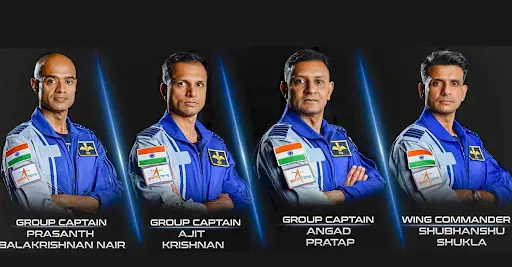
- Only one of the shortlisted astronauts will go on the mission which is supposed to take place “no earlier than October 2024,”.
- The astronauts will have to go to the United States ahead of the mission to train on the specifics of the ISS.
About Axiom-4 Mission:
- Axiom Mission 4 (or Ax-4) is a private spaceflight to the International Space Station.
- Operated by Axiom Space using a SpaceX Crew Dragon spacecraft.
- The flight is in collaboration with NASA and will be the fourth flight of Axiom Space after Axiom Mission 1, Axiom Mission 2, and Axiom Mission 3.
- Scheduled to launch in 2024, Axiom-4 aims to further sustainable human presence in Low Earth Orbit (LEO).
Mission Objectives:
- Commercial Space Endeavours:
- Axiom-4 aims to facilitate commercial activities in space, including scientific research, technological development, and space tourism.
- The mission will help demonstrate the viability of commercial space stations for business and innovation.
- International Collaboration:
- Axiom-4 will carry a diverse crew of astronauts from various countries, enhancing international cooperation in space exploration.
- This mission will strengthen partnerships and contribute to global space initiatives.
- Research and Development:
- The mission will support scientific experiments and technological tests in microgravity.
- Research areas include materials science, biology, Earth observation, and more, aiming for groundbreaking discoveries.
- Key Features:
- Spacecraft and Crew:
- Utilises a SpaceX Dragon spacecraft launched atop a Falcon 9 rocket.
- The crew includes professional astronauts and private individuals (researchers and tourists) with rigorous training.
- Duration and Activities:
- Axiom-4 is expected to be a short-duration mission, lasting approximately 14 days.
- Activities include scientific experiments, technology demonstrations, and educational outreach aboard the ISS.
- Commercial Space Station Development:
- Part of Axiom Space's vision to build the world’s first commercial space station.
- Mission aligns with plans to transition from ISS to an independent orbital outpost.
About International Space Station (ISS):
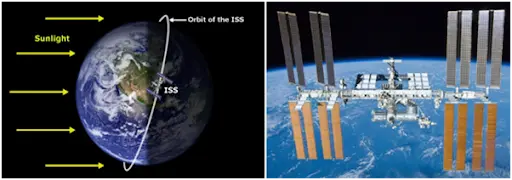
International Space Station:
- Overview:
- The International Space Station (ISS) is a modular space station launched in 1998.
- Modular stations allow for modules to be added or removed, providing greater flexibility.
- It serves as a large laboratory in space where astronauts can stay for weeks or months to conduct experiments in microgravity.
- The first crew arrived on the ISS on November 2, 2000.
- Objective:
- To conduct scientific research in astrobiology, astronomy, meteorology, physics, and other fields.
- The ISS is the largest artificial object in space.
- It circles the Earth in roughly 93 minutes, completing 15.5 orbits per day.
- Currently, the ISS has eight solar arrays generating about 160 kilowatts of power in total.
- Altitude: 400 km
- Participating Space Agencies:
- The ISS is a multinational collaborative project involving five space agencies:
- National Aeronautics and Space Administration (USA)
- Roscosmos State Corporation for Space Activities (Russia) [In 2022, Russia decided to quit the ISS after 2024]
- Japan Aerospace Exploration Agency (Japan)
- European Space Agency (Europe)
- Canadian Space Agency (Canada)
- The station is divided into two sections:
- The Russian Orbital Segment (ROS) – Operated by Russia
- The United States Orbital Segment (USOS) – Operated by the US and other nations
- Ownership and use of the space station are established by intergovernmental treaties and agreements.
Sources: IE
Typhon Weapons System
Why in the news?
- The Philippine Army has announced that the "deadly" Typhon Weapons System, which the United States deployed for joint military exercises, will soon be withdrawn from the country.
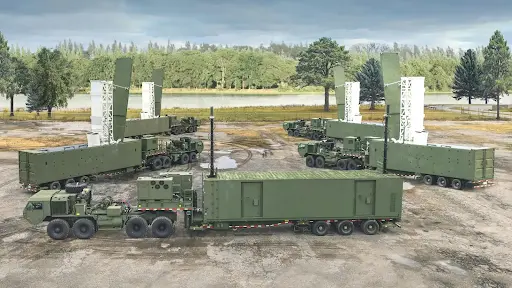
About the Typhon Weapons System:
- The Typhon Weapons System, also known as the Strategic Mid-Range Fires (SMRF) System, is an advanced integrated weapons system developed by the United States Navy. Here are the key features and components:
Key Features:
- Missile Capabilities:
- Standard Missile 6 (SM-6): Capable of ballistic missile defence and targeting ships at sea with a range of 370 kilometres (230 miles).
- Tomahawk Land Attack Missile: A manoeuvrable cruise missile used for deep-land attack warfare.
- System Composition:
- Launchers: Derived from the Mk 41 Vertical Launch System (VLS), capable of firing various containerized missiles.
- Command Post: Central control unit for the system.
- Support Vehicles: Reload and support vehicles mounted on trailers.
- Targeting Information: Utilises offboard sources for targeting data.
- Deployment:
- The Typhon system includes four launchers, a command post, and reload/support vehicles. This configuration allows for flexible and rapid deployment in various military scenarios.
- Tomahawk Missile
- The Tomahawk Missile is a long-range, subsonic cruise missile used by the United States for precise deep-land attack warfare. Here are its key features:
- Features:
- Launch Platforms: Can be launched from ships or submarines.
- Low-Altitude Flight: Flies at low altitudes to evade radar detection and strike fixed targets such as communication and air-defence sites.
Technical Specifications:
- Length: 6 metres (18.4 feet).
- Range: Up to 2,400 kilometres (1,500 miles).
- Speed: Subsonic.
- Guidance Systems: Uses satellite-assisted navigation and TERCOM (Terrain Contour Matching) radar.
- Propulsion:
- Launch Phase: Solid propellant.
- Cruise Phase: Turbofan engine, designed to emit minimal heat to avoid infrared detection.
- Payload: Can carry conventional or nuclear warheads.
Operational Capabilities:
- Manoeuvrability: Capable of twisting and turning like a radar-evading fighter plane, maintaining a low altitude of 30–90 metres (100–300 feet).
Recent Development:
- As of July 5, 2024, the Philippine Army has confirmed that the Typhon Weapons System, deployed by the United States for joint military exercises, will soon be withdrawn from the country.
- This development is part of the dynamic military collaboration and training exercises between the two nations
Source: ET
Common Grass Yellow
Why in the news ?
- The Common Grass Yellow, scientifically known as Eurema hecabe, is a small and charming butterfly species found across various continents including Asia, North America, Africa, and Australia.
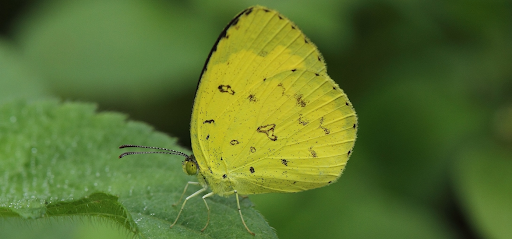
Key Features:
- Wings: Vibrant yellow wings that range from sultry sulfur to lush lemon yellow, exhibiting 'seasonal polyphenism'—colour changes with seasons and locations.
- Markings: Black, broad, irregular outer marking on the forewing; underside features various black marks with yellow centres.
Habitat and Behavior:
- Flight: Flies quickly and close to the ground.
- Preferred Terrain: Open grassy or bushy areas.
- Social Behavior: Often seen in large groups, with females usually flying solo to find nectar from various plants.
- Migratory Patterns: Known for large-scale migrations across Africa and most of Asia south of the Himalayas.
Conservation Status:
- IUCN Red List: Least Concern
- Legal Protection in India: Not protected under any schedules of the Wild Life (Protection) Act, 1972.
Recent Observation:
- A significant migration event of the Common Grass Yellow was recently observed during a three-day butterfly survey at the Mudumalai Tiger Reserve (MTR), marking the first large-scale migration of this species in the area.
Source: TH
National Green Hydrogen Mission
Why in the news ?
- The National Green Hydrogen Mission, approved by the Union Cabinet on January 4, 2023, aims to position India as a global leader in the production, utilisation, and export of green hydrogen and its derivatives.

Current Production:
- Green hydrogen currently accounts for less than 1% of global hydrogen production due to it being expensive to produce.
- A kilogram of black hydrogen costs USD 0.9-1.5 to produce while grey hydrogen costs USD 1.7-2.3 and blue hydrogen can cost anywhere from USD 1.3-3.6.
- However, green hydrogen costs USD 3.5-5.5 per kg, according to a 2020 analysis by the Council for Energy, Environment and Water.
About the Green Hydrogen:
- Hydrogen is a versatile industrial fuel used in various applications such as ammonia production (key for fertilisers), steel manufacturing, refineries, and electricity generation.
- However, current hydrogen production primarily relies on "black or brown" hydrogen, derived from coal.
- Hydrogen, though abundant in the universe, is typically found in compounds like water (H2O).
- When an electric current is passed through water via electrolysis, it splits into elemental oxygen and hydrogen.
- If this electricity comes from renewable sources like wind or solar, the hydrogen produced is termed green hydrogen.
Key Objectives:
- Global Hub: Establish India as a premier centre for green hydrogen production, utilisation, and export.
Components of the Scheme:
- Strategic Interventions for Green Hydrogen Transition Programme (SIGHT):
- Financial Incentives:
- Domestic Manufacturing of Electrolysers
- Production of Green Hydrogen
- Pilot Projects:
- Emerging End-Use Sectors: Support for pilot projects in new applications and production pathways.
- Green Hydrogen Hubs:
- Identification and Development: Regions with the potential for large-scale hydrogen production and utilisation will be developed as hubs.
- Public-Private Partnership for R&D:
- Strategic Hydrogen Innovation Partnership (SHIP): Facilitation of a public-private partnership framework for research and development.
- Skill Development:
- Coordinated Programmes: Comprehensive skill development initiatives to support the mission.
Guidelines for Funding Testing Facilities:
- Budgetary Outlay: ₹200 Crores till the financial year 2025-26.
- Implementation Agency: National Institute of Solar Energy (NISE).
- Scope:
- Quality and Performance Testing Facilities: Establishment of robust testing facilities to ensure the quality, sustainability, and safety of green hydrogen production and trade.
Recent Developments:
- Recently, the Ministry of New and Renewable Energy issued guidelines for funding testing facilities, infrastructure, and institutional support for developing standards and regulatory frameworks under the National Green Hydrogen Mission.
|
UPSC Civil Services Examination Previous Year Question (PYQ) Prelims Q:1 Hydrogen fuel cell vehicles produce one of the following as “exhaust” (2010)
Ans: (c) |
Source: ET
Indian Army Dress Code
Why in the news ?
- The Indian Army has recently reinforced its dress code regulations, emphasising adherence to official rules regarding wearing trinkets and religious symbols while in uniform.
- It comes after observing personnel wearing unauthorised accessories in social media posts.
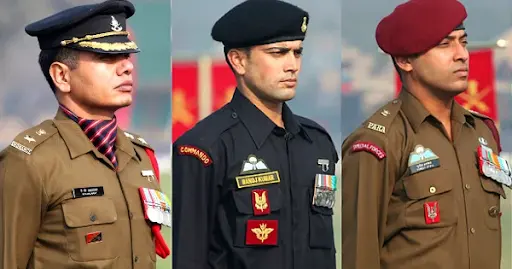
General Dress Code Principles:
- No unauthorised ornaments or emblems are permitted with the uniform, but
- Signet rings are an exception and are allowed.
- Watch chains and trinkets must not be visible when worn with the uniform.
Religious and Cultural Symbols:
- Chains or sacred threads around the neck are prohibited.
- If worn for religious reasons, they must be completely concealed.
- Bracelets are not allowed.
- A single sacred thread on the wrist is permitted only on days of religious significance.
- ‘Kada‘ (Sikh religious bracelet) is allowed for Sikh personnel and non-Sikh officers commanding Sikh troops. Tilak, vibhuti, or other religious symbols are prohibited while in uniform.
Regulations for Female Personnel:
- Married women may wear mangalsutra, but it must not be visible.
- Only small earrings (up to 5mm diameter) are allowed.
- Nose piercings are permitted, but studs can only be worn with a mess dress.
- Lipstick, coloured nail polish, and bindis are prohibited.
- Sindoor is allowed only if not visible when headgear is worn.
- Facial makeup, false eyelashes, and henna on hands are not permitted.
General Jewellery and Accessory Rules:
- Only engagement, wedding, eternity, or signet rings are allowed.
- Rings are not to be worn during ceremonial parades.
- Watches are generally not worn during ceremonial parades except by the senior parade controller.
- Pocket watches with visible chains are prohibited.
- Deodorants and perfumes are strictly prohibited in uniform. After-shave lotions are permitted.
Source: (IE)
Five-Year Climate Agenda for India
Context:
- The new government's actions on climate change will significantly impact every ministry and sector as it settles in.
- Over the next four to five years, the new government has the chance to elevate India’s global climate leadership.
- Decisions made now will shape India's economic path toward sustainability, position it as a leader for the Global South, and determine its fight for climate finance and justice over the next five years.

An Overview of India's Climate Transformation: A Decade of Progress and Leadership
- Establishing Global Institutions:
- International Solar Alliance (ISA)
- Launched in 2015, the ISA aims to promote solar energy utilisation and reduce dependence on fossil fuels.
- By bringing together solar-rich countries, India has facilitated collaboration on solar energy projects, research, and policy development.
- This initiative highlights India’s leadership in promoting renewable energy and addressing energy security concerns.
- Coalition for Disaster Resilient Infrastructure (CDRI)
- Established in 2019, the CDRI focuses on building resilient infrastructure to withstand the impacts of climate change.
- This initiative underscores the importance of preparedness and adaptation, particularly in the face of increasing climate-related disasters.
- By fostering international cooperation, India is helping to build a more resilient global infrastructure landscape.
- Global Biofuels Alliance
- This alliance aims to promote the use of biofuels as a sustainable energy source.
- By advocating for biofuel adoption, India addresses both energy security and environmental sustainability, reducing reliance on fossil fuels, and promoting cleaner alternatives.
- Green Development Pact
- During its G-20 presidency, India championed the Green Development Pact, emphasising sustainable and inclusive growth.
- This pact underscores India’s commitment to integrating sustainability into global economic policies and fostering international cooperation on climate action.
- International Solar Alliance (ISA)
- Setting Ambitious Targets:
- 2070 Net-Zero Target
- India’s goal to achieve net-zero emissions by 2070 is a landmark commitment.
- This target signifies a long-term vision for reducing greenhouse gas emissions and transitioning to a low-carbon economy.
- By setting this goal, India aligns itself with global efforts to limit temperature rise and mitigate climate change impacts.
- Nationally Determined Contributions (NDCs)
- India’s NDCs under the Paris Agreement outline its plans for reducing emissions and enhancing climate resilience.
- These contributions include targets for increasing renewable energy capacity, improving energy efficiency, and reducing emissions intensity.
- India’s ambitious NDCs reflect its proactive stance on climate action and its commitment to achieving measurable progress.
- 2070 Net-Zero Target
- Integrating Sustainability into Domestic Economic Policies:
- Indian Emissions Carbon Trading Scheme:
- Establishing a carbon trading scheme represents a significant step towards market-based mechanisms for reducing emissions.
- This scheme allows for the trading of carbon credits, incentivising businesses to adopt cleaner technologies and reduce their carbon footprint.
- Designed to operate for several decades, this institution is a cornerstone of India’s long-term climate strategy.
- Renewable Energy Expansion:
- India has made remarkable progress in expanding its renewable energy capacity, particularly in solar and wind energy.
- Government policies and initiatives, such as the National Solar Mission, have facilitated large-scale deployment of renewable energy projects.
- This shift towards renewables reduces emissions, enhances energy security, and provides economic opportunities.
- Sustainable Development Initiatives:
- India has launched various initiatives aimed at promoting sustainable development, including efforts to enhance energy efficiency, promote green transportation, and support sustainable agriculture.
- These initiatives align with global sustainability goals and contribute to India’s broader climate objectives.
- Indian Emissions Carbon Trading Scheme:
The Impact of India’s Climate Transformation:
- Enhanced Global Leadership:
- By establishing global institutions and setting ambitious targets, India has positioned itself as a leader in the global climate discourse.
- This leadership role enables India to influence international climate policies and advocate for the needs and priorities of developing countries.
- Economic and Social Benefits:
- Integrating sustainability into economic policies has yielded numerous benefits for India.
- The expansion of renewable energy has created jobs, improved energy access, and reduced energy costs.
- Sustainable development initiatives have enhanced resilience, reduced environmental degradation, and improved quality of life for communities.
- Climate Resilience and Adaptation:
- India’s focus on disaster-resilient infrastructure and climate adaptation measures has strengthened its capacity to withstand climate impacts.This resilience is crucial for protecting vulnerable communities and ensuring sustainable development in the face of climate change.
A Five-Year Climate Plan Sheet for India:
- Go Higher: India’s Global Leadership
- India's leadership on the global stage should be enhanced.
- Hosting major international climate summits, such as the United Nations Conference of Parties in 2028, would solidify its status.
- To achieve this, India must start building consensus on key issues like halting new investments in oil and gas by 2030 and securing adaptation finance for developing countries.
- This requires proactive diplomacy and forming strategic alliances.
- Additionally, India should continue advocating for equity in international forums and positioning itself as a leader in securing climate finance.
- Go Wider: Sectoral Emission Reduction Targets
- India needs to broaden its emission reduction targets beyond the power sector.
- Significant progress has been made in the power sector, but other sectors, such as private mobility, need clear zero-carbon goals.
- Expanding these targets will benefit not just urban areas but also rural India, driving job creation in clean energy and sustainability, and promoting economic growth.
- Credible policy goals have previously spurred industries into action, and the upcoming NDC for 2035 presents an opportunity to set broader energy transition targets.
- Go Deeper: Sub-National Climate Action
- Sub-national climate action and resilience must be prioritised. Initiatives like those by the Council on Energy, Environment and Water (CEEW), which supports state-level net-zero plans, are crucial.
- Collaborations with states such as Tamil Nadu and Bihar on their net-zero transition plans are positive steps.
- To enhance this, a Centre-State coordination group should be established, incentivizing state-level climate actions through mechanisms like the Sixteenth Finance Commission.
- Integrating scientific modelling capabilities into policymaking and creating a unified data measurement, reporting, and verification (MRV) architecture are essential for coordinated and effective state-level actions.
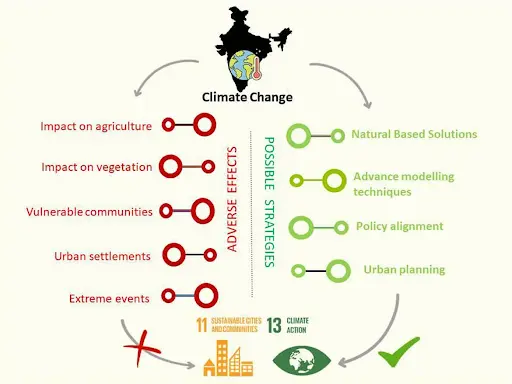
Conclusion
Hence, the new government has the chance to enhance India's global climate leadership. Over the next four to five years, India should leverage its international position to showcase its climate action. By aiming higher, wider, and deeper, India can secure a sustainable economic future and solidify its role as a global climate leader.
|
UPSC Civil Services Examination Previous Year Question (PYQ) Prelims Q:1 With reference to the Agreement at the UNFCCC Meeting in Paris in 2015, which of the following statements is/are correct? (2016)
Select the correct answer using the code given below:
Ans: B Q:2 In the context of India’s preparation for Climate -Smart Agriculture, consider the following statements: (2021)
Which of the statements given above are correct?
Ans: (d) Mains Q:1 Describe the major outcomes of the 26th session of the Conference of the Parties (COP) to the United Nations Framework Convention on Climate Change (UNFCCC). What are the commitments made by India in this conference? (2021) Q:2 Explain the purpose of the Green Grid Initiative launched at the World Leaders Summit of the COP26 UN Climate Change Conference in Glasgow in November, 2021. When was this idea first floated in the International Solar Alliance (ISA)? (2021) |
Source: TH
Practice Questions - Current Affairs 08-07-2024
Q1. Consider the following statements:
- Niger 80% of land area lies in the Sahara.
- Niger shares its border with Benin and Burkina Faso
Which of the statements given above is/are correct?
(a) 1 only
(b) 2 only
(c) Both 1 and 2
(d) Neither 1 nor 2
Q2. With reference to the Laos, consider the following statements:
- Laos is a landlocked country in northeast-central mainland Southeast Asia.
- Laos is bounded to the north by China, to the northeast, and east by Vietnam.
- Laos's capital Vientiane is located on the Mekong River in the northern portion of the country.
How many of the statements given above are correct?
(a) 1 only
(b) 2 and 3 only
(c) 1 and 3 only
(d) 1, 2 and 3
Q3. Arak, Forko and Isfahan regions were recently mentioned in the news, these are located in:
(a) Turkey
(b) Iran
(c) Sudan
(d) Israel
Q4. Bannerghatta National Park was recently mentioned in the news, it is located in:
(a) Tamil Nadu
(b) Karnataka
(c) Kerala
(d) Maharashtra
Q5. Sea Lettuce was recently mentioned in the news, it is related to:
(a) Genus of green algae
(b) Species of fish
(c) A new variety of Lichen
(d) An Invasive species from Australia
Q6. The ‘Farzad-B gas field’, recently mentioned in the news, is situated in:
(a) Amundsen Gulf
(b) Persian Gulf
(c) Gulf of Alaska
(d) Gulf of Guinea
Q7. Consider the following statements about the Banni breed of camels, mentioned in the news recently:
- Recently, India saw the birth of its first In-Vitro fertilization (IVF) calf of a Camel breed, namely Banni in Rajasthan.
- The Banni breed of camels is found primarily in the Jaisalmer region of Rajasthan.
Which of the statements given above is/are correct?
(a) 1 only
(b) 2 only
(c) Both 1 and 2
(d) Neither 1 nor 2
Q8. The Kameng River originates in the eastern Himalayan Mountains and flows through the northeastern States of:
- Arunachal Pradesh
- Assam
- Manipur
Select the correct answer using the code given below:
(a) 1 and 2 only
(b) 2 and 3 only
(c) 1 and 3 only
(d) 1, 2 and 3
Q9. With reference to the Initial Public Offering (IPO), consider the following statements:
- It is a process of offering shares of a private corporation to the public in a new stock issuance.
- The British are credited with conducting the first modern Initial Public Offering (IPO) by providing shares of the East India Company.
Which of the statements given above is/are correct?
(a) 1 only
(b) 2 only
(c) Both 1 and 2
(d) Neither 1 nor 2
Q10. "This wetland is said to be the second-largest brackish water lake in South India after Pulicate Lake. It is a wetland of international importance. Recently, it has been notified as a Bird Sanctuary.”
Which one of the following wetlands has been described in the paragraph given above?
(a) Ashtamudi lake, Kerala
(b) Vembanad Kol wetland, Kerala
(c) Kazhuveli wetland, Tamil Nadu
(d) Kolleru lake, Andhra Pradesh
Q11. Which of the following countries share their border with Lake Albert?
- Democratic Republic of Congo.
- Uganda
- South Sudan
Select the correct answer using the code given below:
(a) 1 and 2 only
(b) 2 and 3 only
(c) 1 and 3 only
(d) 1, 2 and 3
Q12. Blue Shield" emblem of the 1954 Hague Convention is associated with:
(a) Access to humanitarian corridors is determined by the parties to the conflict.
(b) Temporary cessation of fighting to protect civilians.
(c) Protection and support to refugees in the Event of Armed Conflict.
(d) Protection of Cultural Property in the Event of Armed Conflict.
Q13. Consider the following Pairs:
Port Country
- Changi Singapore
- Duqm Yemen
- Sabang Indonesia
- Kyaukpyu Myanmar
How many of the Pairs given above is/are correct?
(a) Only one
(b) Only two
(c) Only three
(d) All four
Q14. Consider the following pairs:
Sea Bordering country
- Baltic Sea : Lithuania
- Persian Gulf : Kuwait
- Gulf of Aden : Yemen
- Yellow Sea : South Korea
- Aral Sea : Uzbekistan
How many of the pairs given above are correctly matched?
(a) Only two
(b) Only three
(c) Only four
(d) All five
Q15. Consider the following Pairs:
Glacier River
- Pindari : Manas River
- Satopanth : Alaknanda River
- Bandarpunch : Yamuna
- Siachen : Nubra
- Gangotri Glacier : Ganges
How many of the pairs given above are correctly matched?
(a) Only two
(b) Only three
(c) Only four
(d) All five
Q16. Consider the following pairs :
Famous place River
- Pattadakal : Malaprabha
- Vijayanagara : Cauvery River
- Thanjavur : Vennar River
How many of the above pairs are correctly matched?
(a) Only one
(b) Only two
(c) All three
(d) None
Q17. With reference to Voice over Wi-Fi (VoWiFi) in communication technologies, consider the following statements:
- Voice over Wi-Fi (VoWiFi) uses high-speed Internet connection, available via broadband, to make and receive high definition (HD) voice calls.
- Keeping VoLTE switched on is essential in VoWiFi for seamless voice calling.
Which of the statements given above is/are correct?
(a) 1 only
(b) 2 only
(c) Both 1 and 2
(d) Neither 1 nor 2
Q18. Consider the following statements:
- Malaria is predominantly found in the subtropical region of Asia and Africa.
- Malaria parasites spread through the bites of infected female Anopheles mosquitoes.
- Plasmodium falciparum and Plasmodium Vivax are the most common types that infect humans.
- Plasmodium falciparum causes a more severe form of the disease leading to a higher risk of death.
How many of the statements given above is/are correct?
(a) Only one
(b) Only two
(c) Only three
(d) All four
Share the article
Edukemy’s Current Affairs Quiz is published with multiple choice questions for UPSC exams
MCQ
Get Latest Updates on Offers, Event dates, and free Mentorship sessions.

Get in touch with our Expert Academic Counsellors 👋
FAQs
UPSC Daily Current Affairs focuses on learning current events on a daily basis. An aspirant needs to study regular and updated information about current events, news, and relevant topics that are important for UPSC aspirants. It covers national and international affairs, government policies, socio-economic issues, science and technology advancements, and more.
UPSC Daily Current Affairs provides aspirants with a concise and comprehensive overview of the latest happenings and developments across various fields. It helps aspirants stay updated with current affairs and provides them with valuable insights and analysis, which are essential for answering questions in the UPSC examinations. It enhances their knowledge, analytical skills, and ability to connect current affairs with the UPSC syllabus.
UPSC Daily Current Affairs covers a wide range of topics, including politics, economics, science and technology, environment, social issues, governance, international relations, and more. It offers news summaries, in-depth analyses, editorials, opinion pieces, and relevant study materials. It also provides practice questions and quizzes to help aspirants test their understanding of current affairs.
Edukemy's UPSC Daily Current Affairs can be accessed through:
- UPSC Daily Current Affairs can be accessed through Current Affairs tab at the top of the Main Page of Edukemy.
- Edukemy Mobile app: The Daily Current Affairs can also be access through Edukemy Mobile App.
- Social media: Follow Edukemy’s official social media accounts or pages that provide UPSC Daily Current Affairs updates, including Facebook, Twitter, or Telegram channels.

